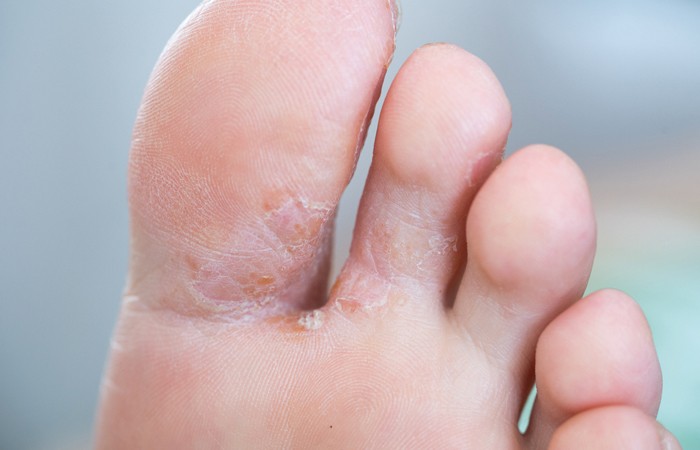OTC Category Reviews 
10-minute clinic: topical fungal infections
In OTC Category Reviews
Follow month by month updates on topics including asthma, mental health and skin conditions and be able to provide informed advice to customers at the counter.Bookmark
This handy 10-minute clinic is designed to act as a quick reference guide that will help you when advising customers in different category areas. The flowchart will lead you through the decision-making process to help you respond to customer queries. This month, we look at the advice you can offer and the products you can recommend to customers suffering from topical fungal infections

At a glance
Whenever you talk to any customer, remember WWHAM:
Who is it for?
It may not be the customer who needs the treatment. Remember, amorolfine can only be used by customers over 18 years of age.
What are the symptoms?
Ask the customer to describe all of the symptoms so that you can establish that they have a fungal infection and decide what the most appropriate treatment will be.
How long have the symptoms been present?
Your customer may have more than one infection, both of which need to be treated to prevent re-infection.
Action already taken?
This will establish whether the customer has used a product that hasn’t helped or wasn’t appropriate for the symptoms.
Medication?
It is important to refer customers who are taking prescribed or OTC medicines, or who have a medical condition, to the pharmacist.
You don’t have to ask these questions in order, and a customer might give you some of this information without you asking. As long as you get the answers at some point in the conversation, you should be able to find out the information you need to make a recommendation. The golden rule to remember is: if in doubt, refer to the pharmacist and don’t be embarrassed to ask for their advice.
Types of fungal infections
Fungal skin infections are divided into groups depending on what type of organism is involved and its location on the body:
- Scalp – tinea capitis (scalp ringworm)
- Body – tinea corporis (ringworm)
- Groin – tinea cruris (jock/dhobie itch)
- Foot – tinea pedis (athlete’s foot)
- Nail – tinea unguium (onychomycosis).
These infections are contagious and can be passed on by direct skin-to-skin contact with an infected person. They can also be spread by contact with objects or surfaces that an infected person has touched, such as clothing, towels, bed linen, combs or brushes. People may also pick up the infection from animals.
Self care tips
• Make sure that areas prone to infection are thoroughly dried after washing
• Avoid sharing towels, as this may spread the infection
• Avoid wearing tight-fitting clothes and underwear
• With jock/dhobie itch, applying antifungal powder after washing can help.
When to refer to the pharmacist
- If symptoms have been present for longer than one month or the infection has not cleared despite use of an OTC antifungal treatment
- Anyone presenting with a scalp infection
- Children under 16 years of age
- If the sufferer is elderly, pregnant or breastfeeding
- If there are signs of a secondary bacterial infection (e.g. pus, redness and/or inflammation)
- Anyone with a condition that could predispose them to fungal infections, e.g. circulatory disorders, diabetes
- Nail infections: anyone under 18 years of age; if more than two nails are affected; if the lower half of the nail is affected; if there is trauma to the nail.
Signposting
• British Skin Foundation
• NHS – ringworm
• NHS – athlete’s foot.
Sponsored
 Sponsored education
Sponsored education
7 steps to managing sore throat
Get to grips with what customers want from their sore throat treatment and upgrade your consultations with this 7-step guide
 Sponsored education
Sponsored education
Managing fever in children
Get to grips with the current guidance on managing fever in children and how antipyretics can help, and discover products you can recommend.


Record my learning outcomes